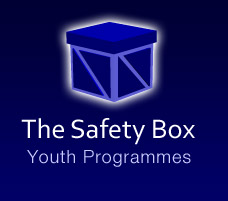Project #318
Project #318 is an awareness program delivered by people that have overcome depression or have a cognizant understanding of it. It aims, to teach young people 12 and older, teachers, parents and school staff to recognise all the symptoms and signs of depression and, secondly, to help them refer someone in distress to the appropriate help and resources.
This course is aimed at getting to the root of depressions before it manifest to more serious teen depression, depression is a mental illness that can destroy relationships, lead to violence, substance abuse, it destroy lives, it can lead to academic failure and more seriously teenage suicide.
Project #318 is delivered in 7 phases.
Phase 1 - Breaking The Myth behind depression
Phase 2 - The difference between Depression & Sadness
Phase 3 - The Causes of Mental Illness
Phase 4 - Identifying Depression & Disruptive patterns
Phase 5 - Spotting Deep Depression & Building Healthy Habits
Phase 6 - Music, Artistic Therapy and Communication Channels
Phase 7 - Ways to help, Breaking the Cycle of negative thinking, Where to find help.
Assistance for young people experiencing trauma or depression
Project 318 is also delivered as a one to one counselling with our HCPC registered Forensic and Clinical Psychologists who provide lead therapy support to young people and adults referred from our courses.
Who is project #318 for?
Young People aged + 12 - 21.
Students within the teaching sector
Parents & Guardians
Education Professionals, Safeguarding Officers, Teachers and School / College Staff
Youth & Social Workers
Symptoms of Teenage Depression
As well as showing many of the same symptoms of adult depression, some symptoms of adolescence / teenage depression are:
Destructive and/or abusive, defiant behaviour.
Hallucinations or unusual beliefs.
Appetite or weight has changed considerably (has lost or gained a substantial amount of weight)
May appear restless, agitated (rubbing face, rubbing or stroking hair, touching nose, pacing, wringing hands) or has slowed down (e.g., spends hours staring in front, finds it difficult to move)
Has lost a lot of energy, complains of feeling tired all the time.
Complaints of feeling guilty or worthless ('everything is my fault', 'I am a failure' 'I cant do it' 'I am bad')
Belief that life is not worth living.
A downward trend in performance at school or college.
How to Help
Always take suicidal tendencies seriously and respond immediately.
Know that early intervention is the key to successful treatment for children who suffer from depressive illnesses.
Dealing with the depression is a team-effort including a psychotherapist, parents, relatives, guardians, school teachers, friends and other significant people in the child's life.
Educate yourself on teenage & adolescent depressive illnesses and suicide.
Assure your child they can feel better, that suicidal thoughts are only temporary, and that there are people who can help them.
Research
GANG MEMBERS SUFFER UNPRECEDENTED LEVELS OF PSYCHIATRIC ILLNESS
In 2013 The National Institute for Health Research (NIHR) and Maurice & Jacqueline Bennett Charitable Trust funded study, a survey of 4,664 men aged 18 to 34 in Britain.
The research covered measures of psychiatric illness, violence and gang membership. It was the first time research has looked into whether gang violence is associated with psychiatric illness, other than substance misuse. The survey sample was weighted to include significant numbers from areas with high gang membership (Hackney and Glasgow East), lower social classes and areas with a higher than average population of ethnic minority residents.
Of the total sample, 3,284 (70.4 per cent) reported that they had not been violent in the past five years, 1,272 (27.3 per cent) said they had assaulted another person or been involved in a fight, and 108 (2.1 per cent) said they were currently a member of a gang. Using these results the participants were split into three groups -- gang members, violent men and non-violent men for the analysis.
Both violent men and gang members were found to be younger than non-violent men, more likely to have been born in the UK and more likely to be unemployed. In terms of mental health, gang members and violent men were significantly more likely to suffer from a mental disorder and access psychiatric services than non-violent men. The exception was depression, which was significantly less common among gang members and violent men.
Violent ruminative thinking, violent victimisation and fear of further victimisation were significantly higher in gang members and believed to account for high levels of psychosis and anxiety disorder in gang members.
The findings showed that, of the 108 gang members surveyed:
85.8 per cent had an antisocial personality disorder;
Two-thirds were alcohol dependent;
25.1 per cent screened positive for psychosis;
More than half (57.4 per cent) were drug dependent;
Around a third (34.2 per cent) had attempted suicide; and
More than half (58.9 per cent) had an anxiety disorder.
Reference:
Date: July 12, 2013
Source: Queen Mary, University of London
Summary: Young men who are gang members suffer unprecedented levels of psychiatric illness, placing a heavy burden on mental health services, according to new research.




